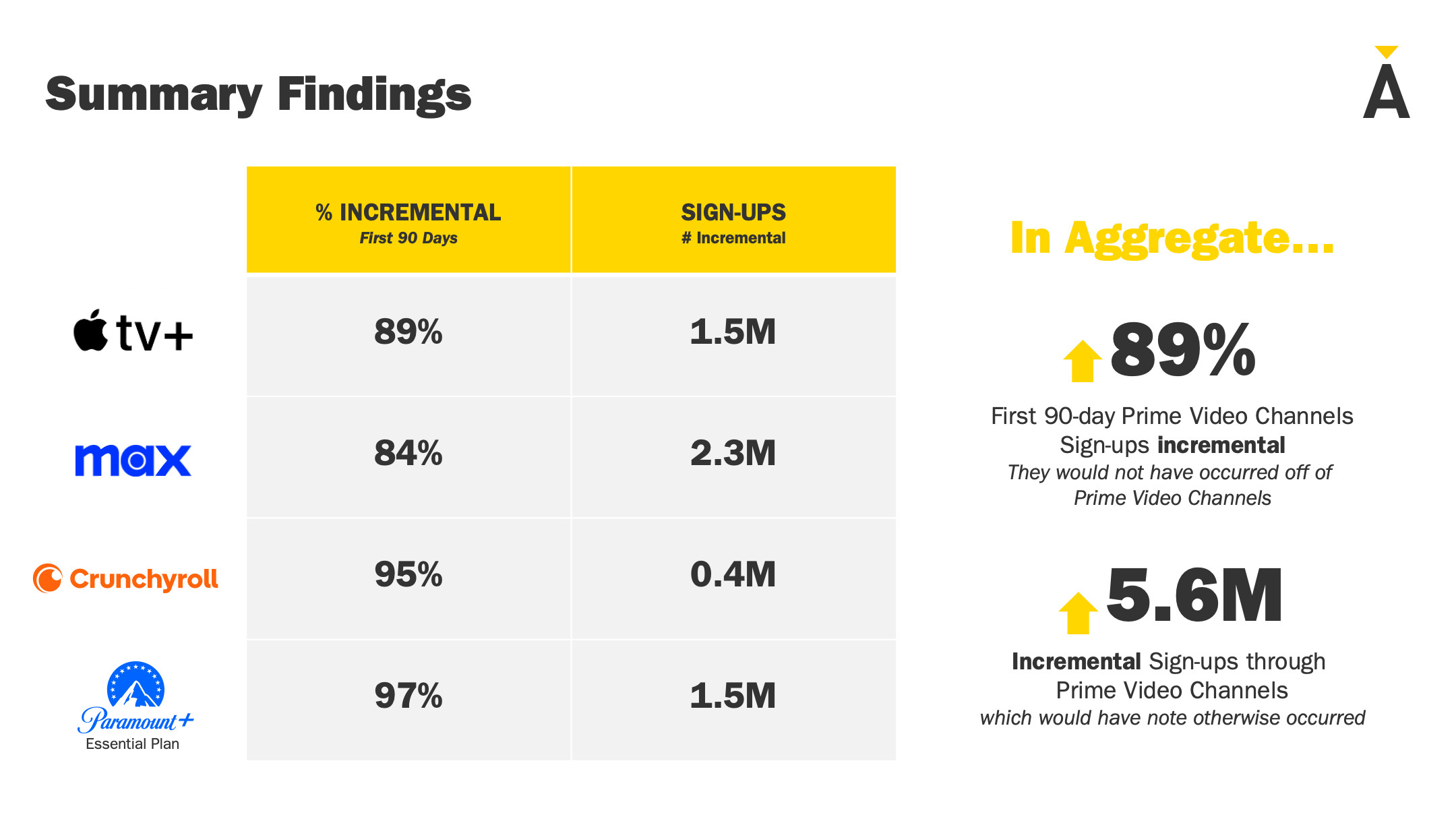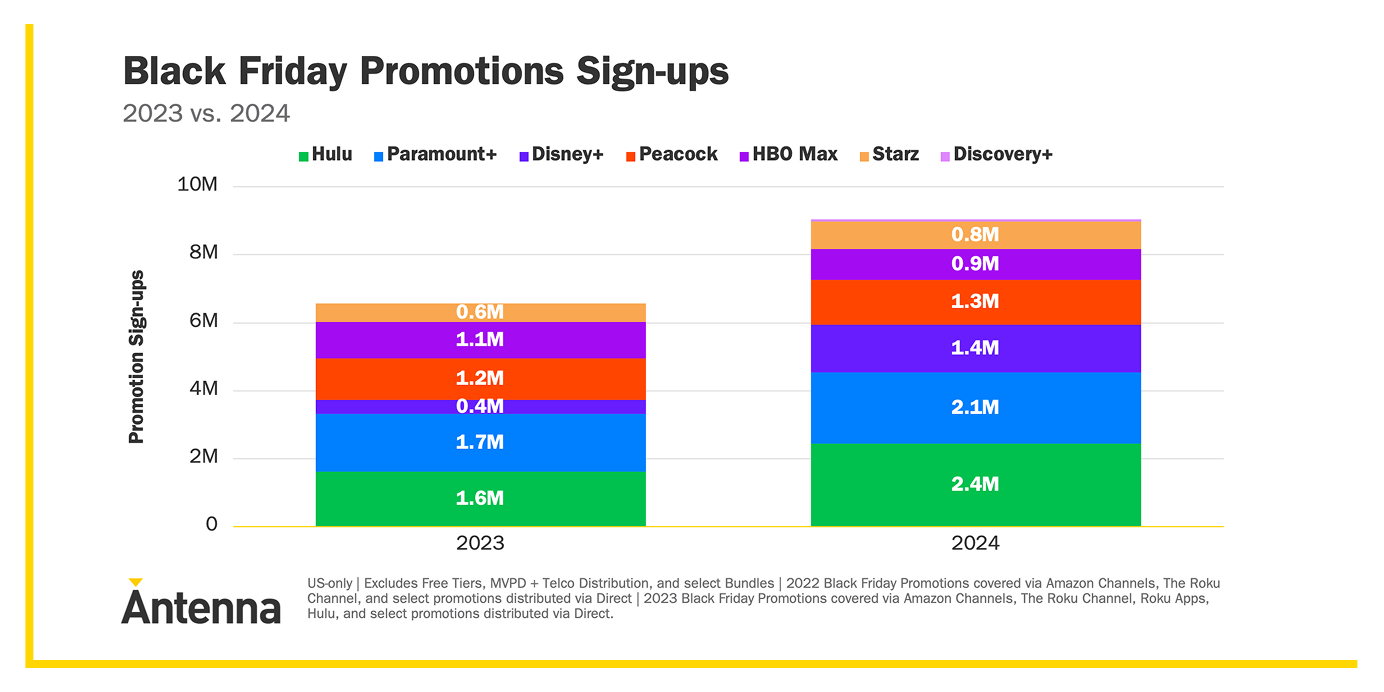Third-party distribution has become a significant part of the growth story for streaming video, particularly “channels” environments. Antenna estimates that 1 in 3 new streaming subscriptions in Q1'25 came through these stores—a sharp increase from just two years prior, with the vast majority via Amazon Prime Video Channels.
.png)
Different services are taking wildly different approaches to distribution. On one extreme, Netflix is purely direct-to-consumer (DTC). Services like Peacock leverage app stores, while Apple TV+ has notably augmented its DTC efforts by distributing through Amazon Prime Video Channels. Paramount+ has gone all-in on distribution partners, making itself available virtually everywhere; as a result, they have a very balanced distribution. Specialty services like AcornTV also distribute broadly, but see a disproportionate share of their subscribers coming from Amazon Prime Video Channels. PBS Masterpiece takes a unique approach, making itself available only on Amazon.

We can see similar distribution dynamics play out in other industries. During the pandemic, Nike, like many other brands, saw a surge of DTC activity. Coming out of lockdowns in 2021, they leaned into that strategy, pulling out of many retail environments in an attempt to shift shoppers to the Nike website, the Nike app, and their owned retail stores. They found that die-hard brand fans followed them, but they lost many casual shoppers. Many consumers visit retail stores like DSW to shop for sneakers, not specifically for Nike products; when Nike items disappear from those shelves, they lose those sales. In 2023, Nike reversed course and returned to DSW and other retail environments.
A similar story unfolded in the streaming world with HBO Max. In 2021, driven by its focus on DTC, HBO Max withdrew from Amazon Prime Video Channels. Antenna estimates that HBO Max lost 5M customers overnight, and fewer than 1 in 10 of them resubscribed to the brand in the subsequent eight months. Furthermore, the majority of those who resubscribed did so through different third-party distributors rather than directly with the brand.
When HBO Max returned to Amazon Prime Video Channels in December 2022, the impact was immediate and substantial. Antenna estimates that Prime Video drove 3M Sign-Ups to HBO Max in the first three months alone.
While these case studies suggest that third-party distribution drives brand growth, it does not quantify it. To better understand the impact, Antenna developed a prediction model to measure the "incrementality" of third-party distribution. We used this model to analyze the launches of Amazon Prime Video Channels for HBO Max, Apple TV+, Crunchyroll, and Paramount+ Essential Plan, controlling for factors such as seasonality and promotions.

In aggregate across these four case studies, Antenna estimates that a remarkable 89% of individuals who signed up for one of these services through Prime Video would not have done so if the service were not available on the platform. This equates to an impressive 5.6M incremental sign-ups within 90 days across these four cases.
Third-party distributors are proving to be a uniquely powerful way for streamers to reach a large audience, and drive truly incremental growth which streamers are not typically able to capture on their own.
For more detailed information on Antenna’s methodology and definitions of core metrics, please visit http://www.antenna.live/methodology.

.png)



